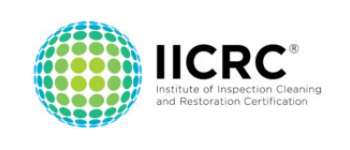
Ways to Prevent Water Damage in your Bathroom
Prevention of water damage in your bathroom is key if you want to avoid costly repairs. Water-damaged bathroom walls and floors can actually impact other parts of your home as well, leading to water damage and mold growth throughout your home. You will want to be sure that you are aware of damage in the bathroom well before it starts to impact the other rooms in your home.
There are some key ways that you can prevent water damage in your bathroom, and you will want to be sure that you are taking the time to use these tips every day. Preventing mold growth and keeping excess moisture from impacting your entire home is key to a happy and healthy home.
Ways to Prevent Water Damage in the Bathroom
You always need to remember that there are many sources of water in the bathroom that might cause damage to the flooring and the walls in the space. Make sure that you attend to water on the floor and moisture in the air promptly after each use of the bathroom to ensure that you do not have to deal with water damage in this space. Caring for your bathroom properly can make a big difference in the longevity of this room and all of its fixtures.
- Run the Exhaust Fan
This is a key aspect of keeping excess moisture out of the air in your bathroom. You will want to run the exhaust fan every time you shower or bathe to be sure that water damage does not impact your walls or create mold growth inside the bathroom and the nearby rooms.
You might be surprised at just how much moisture gets past the shower doors when you take a shower. Moisture in the air can lead to all kinds of problems with your bathroom floor and bathroom walls that you can avoid just by using the fan.
- Replace Torn Shower Curtains
It might seem like your damaged shower curtain is just fine and will last you for a while longer. However, this is a key way that water damage impacts bathroom floors. Bathroom water damage is often linked to standing water that is not removed before further damage can happen.
While this kind of excess water might not seem like it is causing damage, water dripping onto the floor while you shower can be just as bad as a water leak in your bathroom spaces. Loose tiles and water seeping into the subflooring are common secondary problems related to shower curtains that should have been replaced.
- Check for Signs of Leaks
Leaks from supply line connections or problems with burst pipes can all lead to bathroom water damage. Be sure that you check on the water supply lines in your bathroom frequently so that you can catch early warning signs of leaks that might lead to bathroom water damage. Many people do not notice the early signs of water damage until there is a major problem going on that requires extensive repairs.
- Only Flush Toilet Paper
One of the main things that lead to water damage in the bathroom is an overflowing toilet bowl. You might be shocked at the damage that can be caused by a single significant toilet overflow and the health issues that repeated overflows can cause. Water damage of this kind can be avoided by ensuring that you are not flushing anything but toilet paper down the toilet. Many wipe brands claim that they make “flushable” wipes, but this is not true. These kinds of items can lead to clogs that cause water damage and problems with your sewer system as well.
- Keep Kids From Splashing in the Tub
While bath time should be a lot of fun for little kids, the more they splash, the more water damage they might be inflicting on your bathroom space. Allowing water to collect on the floor in the bathroom can lead to spongy floors and a musty odor which indicates dry rot. Dry rot can extend into other rooms that are adjacent to the bathroom as well, so you will want to avoid this. If you have damaged grout in your bathroom tiles, be sure that you get this taken care of as well so that water does not run under the tiles and into the subflooring near the tub and shower.
- Ensure Proper Ventilation
Your bathroom should have a vent fan that is intended to keep moisture from collecting in the air and hanging out on surfaces in your bathroom. However, if you do not have a fan in your bathroom, be sure to open the window to allow ventilation into the bathroom space. Water damage from moisture in the air can be very common. Hot showers, in particular, can cause mist and steam, which can collect on all the surfaces in your bathroom when there is not enough ventilation in the space.

What Do I Do if I Think I Have a Leak in My Bathroom?
If you think that you have detected a water leak in your bathroom, you will need to call a plumber out to have a look at the water connections and to inspect the drains in your shower and tub. If the plumber does not find anything wrong, but you are still noticing a musty smell and a feeling of spongy flooring underfoot, you might need to have a restoration team come to inspect your home.
Water damage can happen slowly over time, so you might have missed the early warning signs of things like dry rot. Having your home inspected for damage is a good idea before something serious happens like the floor collapses or the tub sinks. Be sure to use these tips and tricks to care for your bathroom properly and to prevent bathroom water damage. Keeping a healthy home is easy if you make sure that your bathroom is not a source of water damage that can impact your whole home.





